
Alexander Moody Stuart was a minister of the Free Church of Scotland. He served as Moderator of the General Assembly to the Free Church of Scotland in 1875.

James Begg was a minister of the Free Church of Scotland who served as Moderator of the General Assembly 1865/66.

Liberton is a suburb of Edinburgh, the capital of Scotland. It is in the south of the city, south of The Inch, east of the Braid Hills and west of Moredun.
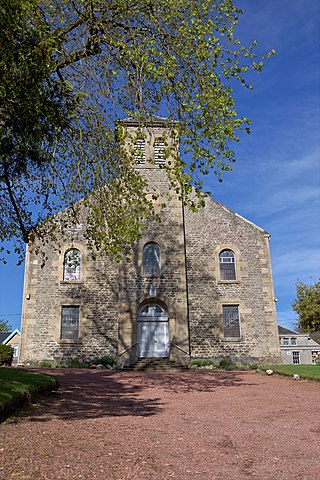
Abbeygreen Church is a congregation of the Free Church of Scotland in the small town of Lesmahagow, Lanarkshire. As a Christian congregation, it is presbyterian and reformed; holding the Word of God, the Holy Bible, as the supreme rule of life and doctrine and the Westminster Confession of Faith as a sub-ordinate standard, which helps explain the doctrines of the Christian faith. Being Presbyterian, it serves as part of the Free Church of Scotland Presbytery of Glasgow and seeks to faithfully serve God in Lesmahagow and the surrounding area. Having a missional outlook it is involved with a number of missionary organizations including, but not only, UFM Worldwide and Rose of Sharon Ministries, and helps with the organization and support of the Scottish Reformed Conference.

The Queen's Hall is a performance venue in the Southside, Edinburgh, Scotland. The building opened in 1824 as Hope Park Chapel and reopened as the Queen's Hall in 1979.
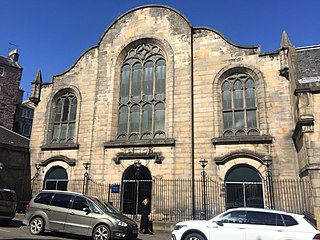
Lady Yester's Kirk was a parish church of the Church of Scotland and one of the burgh churches of Edinburgh. Founded in 1647, it served the south-eastern part of Edinburgh's Old Town until its union with Greyfriars Kirk in 1938.
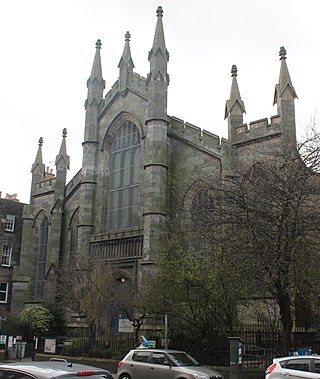
The Southside Community Centre is a community centre in the Southside, Edinburgh, Scotland, United Kingdom. The centre opened in 1986 and occupies the former Nicolson Street Church, which was completed in 1820.

William Henry Gray (1825-1908) was a Scottish minister who served as Moderator of the General Assembly of the Church of Scotland in 1888, the highest position in the Church of Scotland. From 1889 he was styled Very Rev Dr William H. Gray. As an author he wrote several religious books for children.
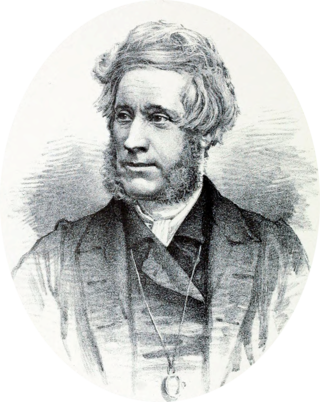
William King Tweedie (1803–1863) was an historian, biographer and a minister of the Free Church of Scotland Tolbooth Church, Edinburgh.

James Julius Wood (1800–1877) was a 19th-century Scottish minister who served as Moderator of the General Assembly of the Free Church of Scotland 1857/8.

St Andrew's Orthodox Church is an Orthodox church located in the Southside, Edinburgh, Scotland. Edinburgh’s Orthodox community was founded in 1948 and has, since 2013, occupied the former Buccleuch Parish Church, which was founded as a chapel of ease of St Cuthbert's in 1756 and closed in 1969.

David Carment (1772–1856) was a minister of first the Church of Scotland and then the Free Church of Scotland, who was involved in the Disruption of 1843 and in the legal troubles of the aftermath regarding church property ownership.

Bristo Church was a Presbyterian church located in the Bristo area of Edinburgh, Scotland. Founded in 1741 as a Secession church, it reunited with the Church of Scotland in 1929 before being dissolved in 1937. The University of Edinburgh afterwards used the building as the Pollock Memorial Hall until its demolition in 1967.

St Paul's Parish Church was a parish church of the Church of Scotland located in St Leonard's, Edinburgh, Scotland. Its building served as a church between 1836 and 1942 before being demolished in 1980.

John Forbes was a Presbyterian minister who served in St Paul's Church in Glasgow. After several years in the Church of Scotland, he left at the Disruption and joined the Free Church of Scotland.

West St Giles' Parish Church was a parish church of the Church of Scotland and a burgh church of Edinburgh, Scotland. Occupying the Haddo's Hole division of St Giles' from 1699, the church was then based in Marchmont between 1883 and its closure in 1972.

Pleasance Church was a Presbyterian church on the Pleasance in the Southside of Edinburgh, Scotland. Originating in the Relief Church in the 1820s, the congregation united with Charteris Memorial in 1953.
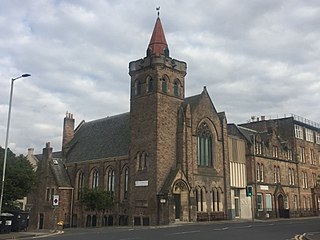
The Greyfriars Charteris Centre is a community centre in the Southside, Edinburgh, Scotland, part of the mission of Greyfriars Kirk. The centre opened in 2016 and occupies the 20th century church buildings which became Kirk o' Field Parish Church in 1969.

The Highland Church was a Gaelic-speaking congregation of the Church of Scotland, based in Tollcross, Edinburgh. Formed by the union of St Oran's Church and St Columba's Gaelic Church in 1948, the congregation continued united with Tolbooth St John's in 1956.
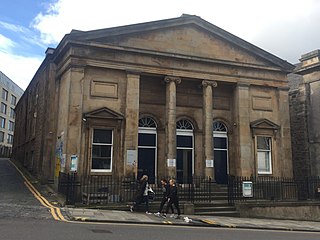
St Oran's Church was a Gaelic-speaking congregation of the Church of Scotland in Edinburgh. Originating in the early 18th-century, the congregation continued until 1948, latterly meeting at Broughton Street.























